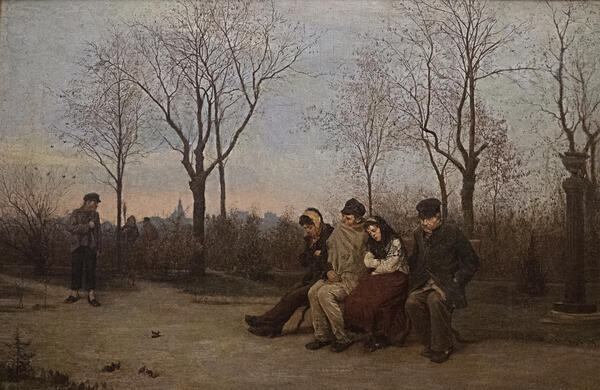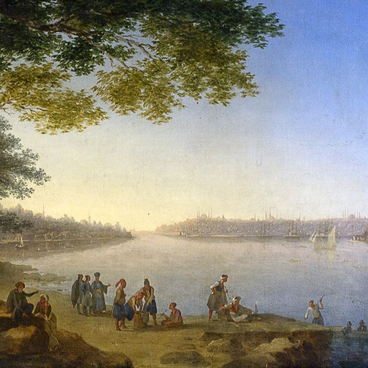Many painters of the second half of the 19th century paid special attention to the depiction of modern life. They believed that art should depict real life with all its contradictions, and that artists can use their art to fight for noble social ideals.
Nikolai Skadovsky came from a noble Polish family. He was born in 1846 in the Kherson Governorate. First, Skadovsky entered the medical faculty of the Moscow University, but his love for drawing was so strong that he signed up for classes at the Moscow School of Painting. And later he transferred from the Faculty of Medicine to the Faculty of Law in order to devote more time to painting.
Skadovsky graduated successfully from both educational institutions, but nevertheless he decided to dedicate his life to painting. Sadovsky entered the Düsseldorf Academy of Arts, and after completing his studies, he went on a trip to European countries to get acquainted with the artworks of the past.
After returning home, Skadovsky began to paint pictures on everyday life scenes. In his work the artist employed plenty of realistic details; he knew how to find and depict character types. His work quickly gained recognition — his paintings were praised and received awards in art contests, several of his works were acquired by Pavel Tretyakov, a famous Russian philanthropist and art collector.
In 1889, Skadovsky, who was fascinated by the ideas of the Itinerant artists, became a co-founder of The Society of South Russian Artists in Odessa. The Society existed until 1922, organizing numerous exhibitions and becoming the center of cultural life for the artists in the south of Russia.
The artist painted ‘Homeless’ in the 1870s. Skadovsky was drawn by an unattractive aspect of city life. The people, who are featured in the canvas, do not have their own shelter — they have to move between temporary shelters, and sometimes just live on the street. They sit on a garden bench — they are cold, poorly dressed and they huddle together closely. The feeling of being lost is emphasized by the artist who depicts the characters as if they were on stage. And the disagreeable autumn nature, as well as the gloomy, indefinite time of day contribute to the feelings of desolation, uncertainty about the future and nagging anxiety.
Nikolai Skadovsky came from a noble Polish family. He was born in 1846 in the Kherson Governorate. First, Skadovsky entered the medical faculty of the Moscow University, but his love for drawing was so strong that he signed up for classes at the Moscow School of Painting. And later he transferred from the Faculty of Medicine to the Faculty of Law in order to devote more time to painting.
Skadovsky graduated successfully from both educational institutions, but nevertheless he decided to dedicate his life to painting. Sadovsky entered the Düsseldorf Academy of Arts, and after completing his studies, he went on a trip to European countries to get acquainted with the artworks of the past.
After returning home, Skadovsky began to paint pictures on everyday life scenes. In his work the artist employed plenty of realistic details; he knew how to find and depict character types. His work quickly gained recognition — his paintings were praised and received awards in art contests, several of his works were acquired by Pavel Tretyakov, a famous Russian philanthropist and art collector.
In 1889, Skadovsky, who was fascinated by the ideas of the Itinerant artists, became a co-founder of The Society of South Russian Artists in Odessa. The Society existed until 1922, organizing numerous exhibitions and becoming the center of cultural life for the artists in the south of Russia.
The artist painted ‘Homeless’ in the 1870s. Skadovsky was drawn by an unattractive aspect of city life. The people, who are featured in the canvas, do not have their own shelter — they have to move between temporary shelters, and sometimes just live on the street. They sit on a garden bench — they are cold, poorly dressed and they huddle together closely. The feeling of being lost is emphasized by the artist who depicts the characters as if they were on stage. And the disagreeable autumn nature, as well as the gloomy, indefinite time of day contribute to the feelings of desolation, uncertainty about the future and nagging anxiety.



